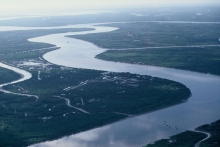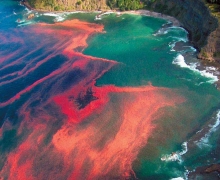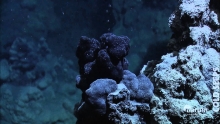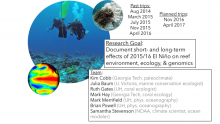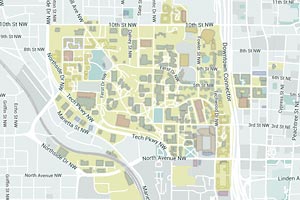- You are here:
- GT Home
- Sciences
- Home
- List of Available Research Projects
Many densely populated coastal areas around the world are low lying and susceptible to relative sea level rise (SLR) associated with climate change, land level subsidence or tectonic subsidence. Coastal defense structures have been constructed as barriers to certain design storm surge, storm wave or tsunami heights. Typically even without SLR the design criteria change over time as hazards get reanalyzed or remodeled. The decrease in risk reduction due to relative SLR and the performance of existing defense barriers under loading conditions beyond the design need to be determined.
The exponential growth of human populations in the Mekong-South China Sea (SCS) system, the eutrophication of estuarine and coastal waters by excess nutrients transported by the Mekong River, and the rapid sinking of the Mekong Delta are fundamentally changing the biological productivity and biodiversity of the system, with uncertain implications these aquatic resources. In the near future, larger forcings will alter the linkages between the Mekong system and the SCS basin.
The exponential growth of human populations in the Mekong-South China Sea (SCS) system, the eutrophication of estuarine and coastal waters by excess nutrients transported by the Mekong River, and the rapid sinking of the Mekong Delta are fundamentally changing the biological productivity and biodiversity of the system, with uncertain implications these aquatic resources. In the near future, larger forcings will alter the linkages between the Mekong system and the SCS basin.
The exponential growth of human populations in the Mekong-South China Sea (SCS) system, the eutrophication of estuarine and coastal waters by excess nutrients transported by the Mekong River, and the rapid sinking of the Mekong Delta are fundamentally changing the biological productivity and biodiversity of the system, with uncertain implications these aquatic resources. In the near future, larger forcings will alter the linkages between the Mekong system and the SCS basin.
The exponential growth of human populations in the Mekong-South China Sea (SCS) system, the eutrophication of estuarine and coastal waters by excess nutrients transported by the Mekong River, and the rapid sinking of the Mekong Delta are fundamentally changing the biological productivity and biodiversity of the system, with uncertain implications these aquatic resources. In the near future, larger forcings will alter the linkages between the Mekong system and the SCS basin.
Single-celled marine algae are especially chemically rich, producing toxins that kill fish, marine mammals, and seabirds, contaminate shellfish, and threaten human health. Many predators of these algae – copepods – selectively consume less toxic algae, which in turn sense copepods via an excreted blend of copepod-specific molecules. These algae then become up to 20X more toxic when they sense copepod cues in the open ocean.
Deep subsurface methane hydrate-bearing sediments contain microbial communities that are distinct from shallow marine sediments and hydrate-free environments. DNA evidence suggests that novel bacterial phyla (e.g. Atribacteria) are highly enriched in methane hydrate-bearing sediments. Recent genome assemblies by the Glass group at Georgia Tech are providing insights into the metabolic potential of samples drilled from gas hydrate stability zone 70 mbsf below Hydrate Ridge (IODP Leg 204).
Deep subsurface methane hydrate-bearing sediments contain microbial communities that are distinct from shallow marine sediments and hydrate-free environments. DNA evidence suggests that novel bacterial phyla (e.g. Atribacteria) are highly enriched in methane hydrate-bearing sediments. Recent genome assemblies by the Glass group at Georgia Tech are providing insights into the metabolic potential of samples drilled from gas hydrate stability zone 70 mbsf below Hydrate Ridge (IODP Leg 204).
Geochemical time series from remote Pacific atolls have provided long records of climate variability that extend into the pre-industrial era. Recent studies document a wide range of geochemical variability in corals growing on the same reef, ostensibly of the same genus. Deciphering which fraction of coral geochemistry variations are driven by changes in physical environment versus physiological differences between corals is key to constructing more robust records of past climate variability.
Geochemical time series from remote Pacific atolls have provided long records of climate variability that extend into the pre-industrial era. Recent studies document a wide range of geochemical variability in corals growing on the same reef, ostensibly of the same genus. Deciphering which fraction of coral geochemistry variations are driven by changes in physical environment versus physiological differences between corals is key to constructing more robust records of past climate variability.


